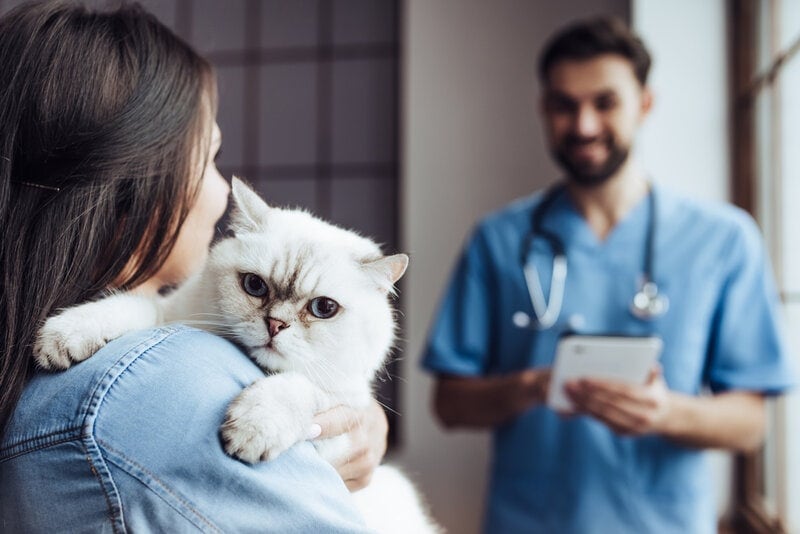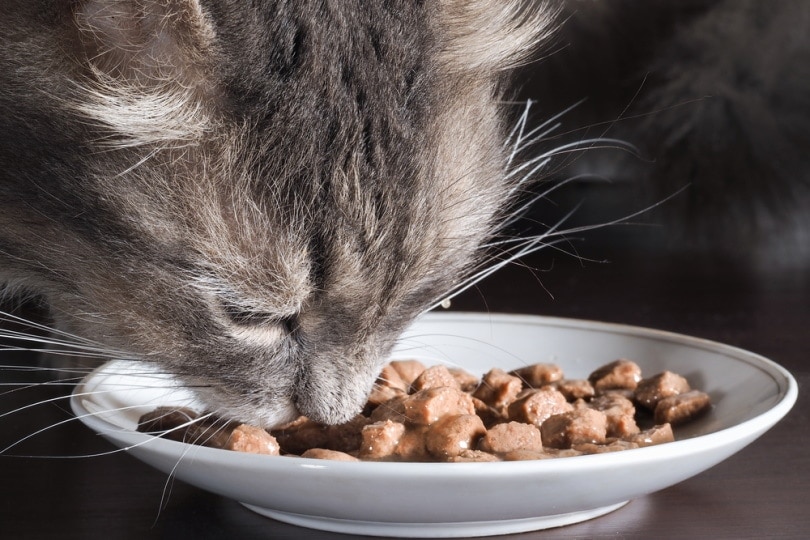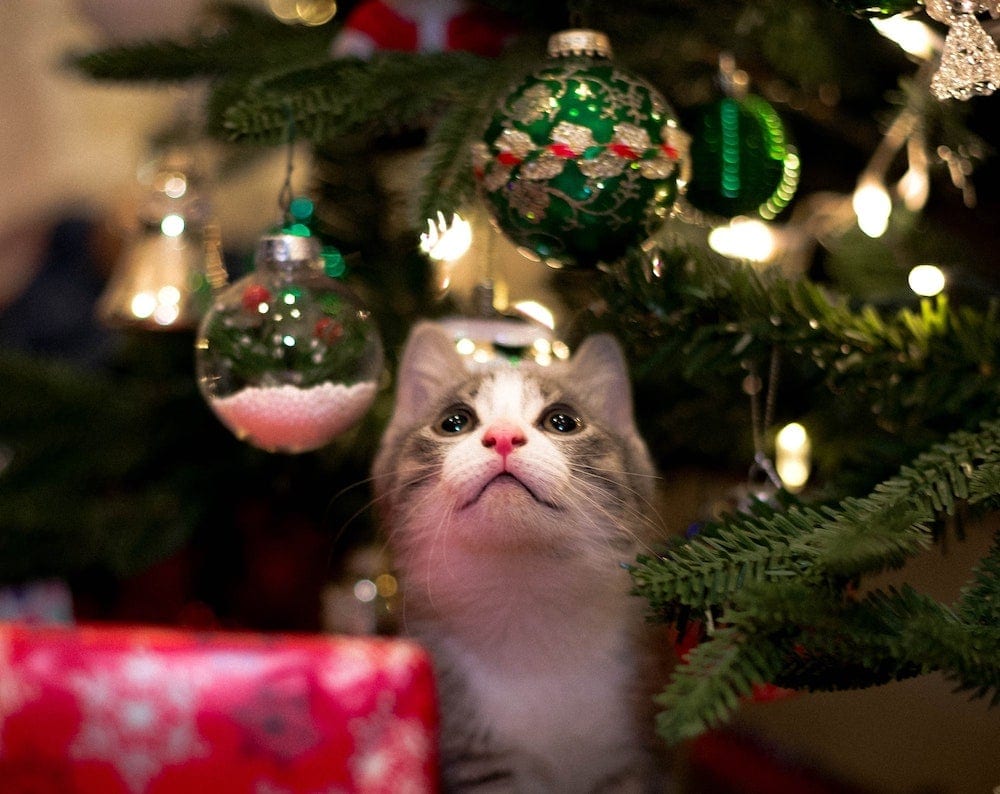Why Do Cats Sleep So Much? Vet-Reviewed Facts & FAQs
Updated on
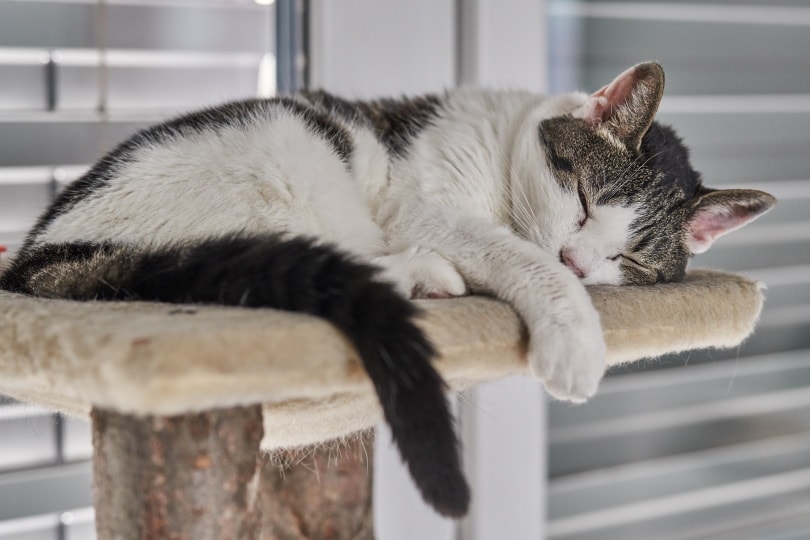
Eventually, it might start to drive you crazy: you rush around all day, hard at work, but every time you look at your cat they always seem to be sleeping. What a life, you think, sleeping all day with no care in the world! Of course, your cat never actually sleeps all day and often wakes up just as you are ready to go to bed, fresh and ready to play.
Have you ever wondered, as you step over your snoozing cat for what seems like the 100th time, why it is that cats sleep so much?
Cats sleep so much because of their crepuscular lifestyle and activity patterns that require frequent short periods of sleep to rest and prepare for hunting food or playing, in the case of pet cats. Stalking, chasing, and capturing prey takes tons of energy, and wild cats need plenty of sleep to make up for it. Even though pet cats usually don’t need to hunt their own food, the instinct to sleep and conserve energy remains.
How Much Do Cats Actually Sleep?
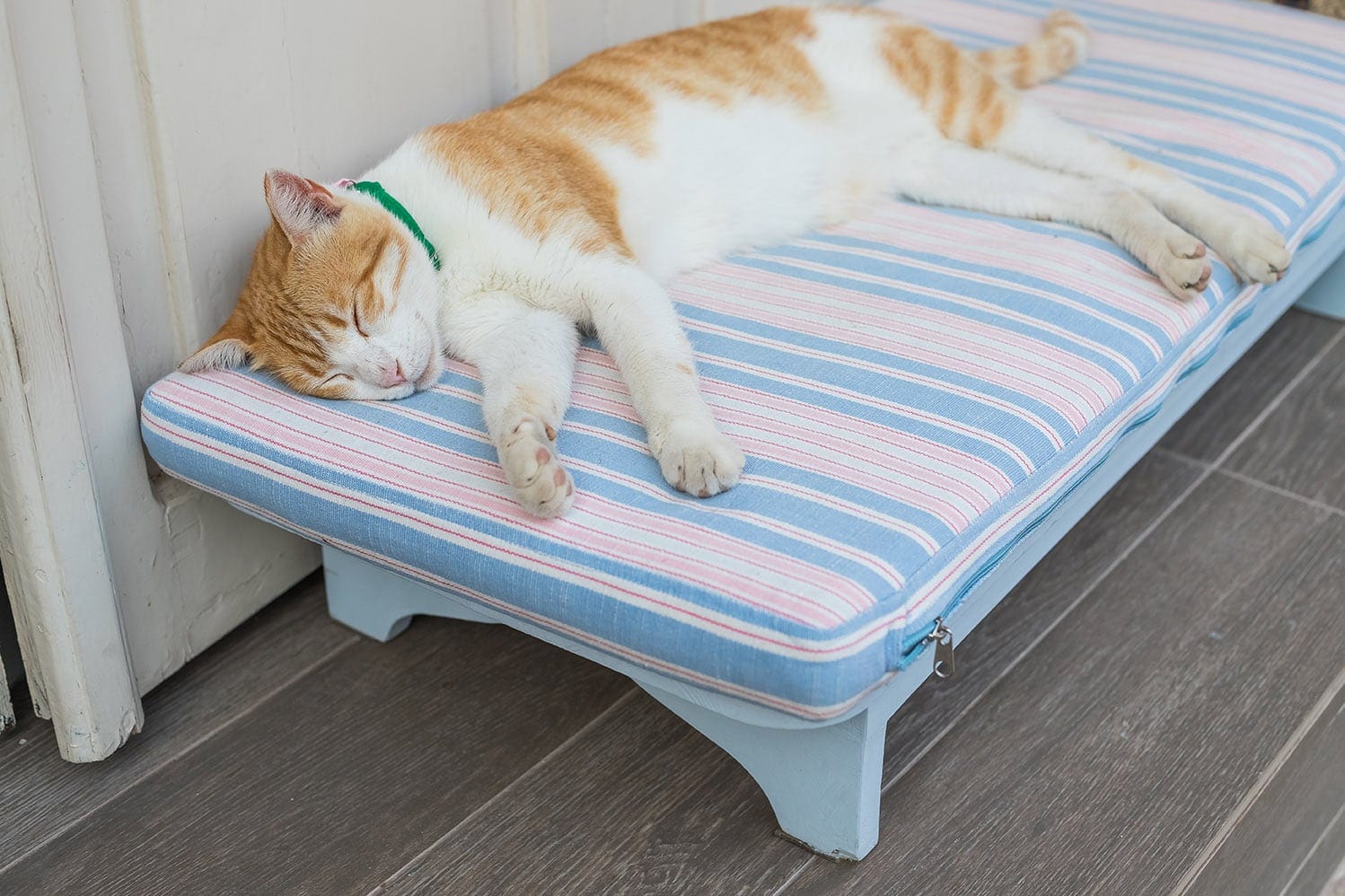
A cat’s sleeping patterns and hours of sleep vary based on their life stage. Very young and very old cats usually sleep the most. Very young kittens sleep almost all day, timing their periods of waking and activity around mealtimes.
“Teenage” cats usually sleep the least as this is the most active and playful period of a cat’s life. Their sleeping patterns are somewhat unpredictable at this age.
By the time they mature into adulthood, cats have settled into their sleeping ways. The average adult cat can sleep around 16 hours per day, give or take a few hours, which is usually in a consistent pattern based on their routine.
Elderly cats are generally less active overall and may return to sleeping for much of the day. However, excessive sleeping in an older cat may also indicate an underlying illness and is generally accompanied by lethargy, reduced appetite, hiding, toileting issues, weakness, wobbliness, or other signs. Get your older kitty checked out by the vet if you think they are sleeping more than usual.
What Are a Cat’s Usual Sleeping Patterns?
Many cats, especially young ones, seem to take great pleasure in playing loudly in the middle of the night. However, cats are not truly nocturnal animals.
Wild felines are most active around dawn and dusk, which is also known as the crepuscular activity pattern. This allows them to rest during the heat of the day and hunt during the time their usual prey is also awake. Wild cats also avoid nocturnal predators by laying low during those hours.
Pet cats may also adopt similar sleeping patterns as their wild relatives. However, a pet cat may also adapt their awake times to more closely match the rhythm of their household. For example, your cat may figure out when you are busy, away, or working and sleep during those times, waking up when you are available to spend time with them.
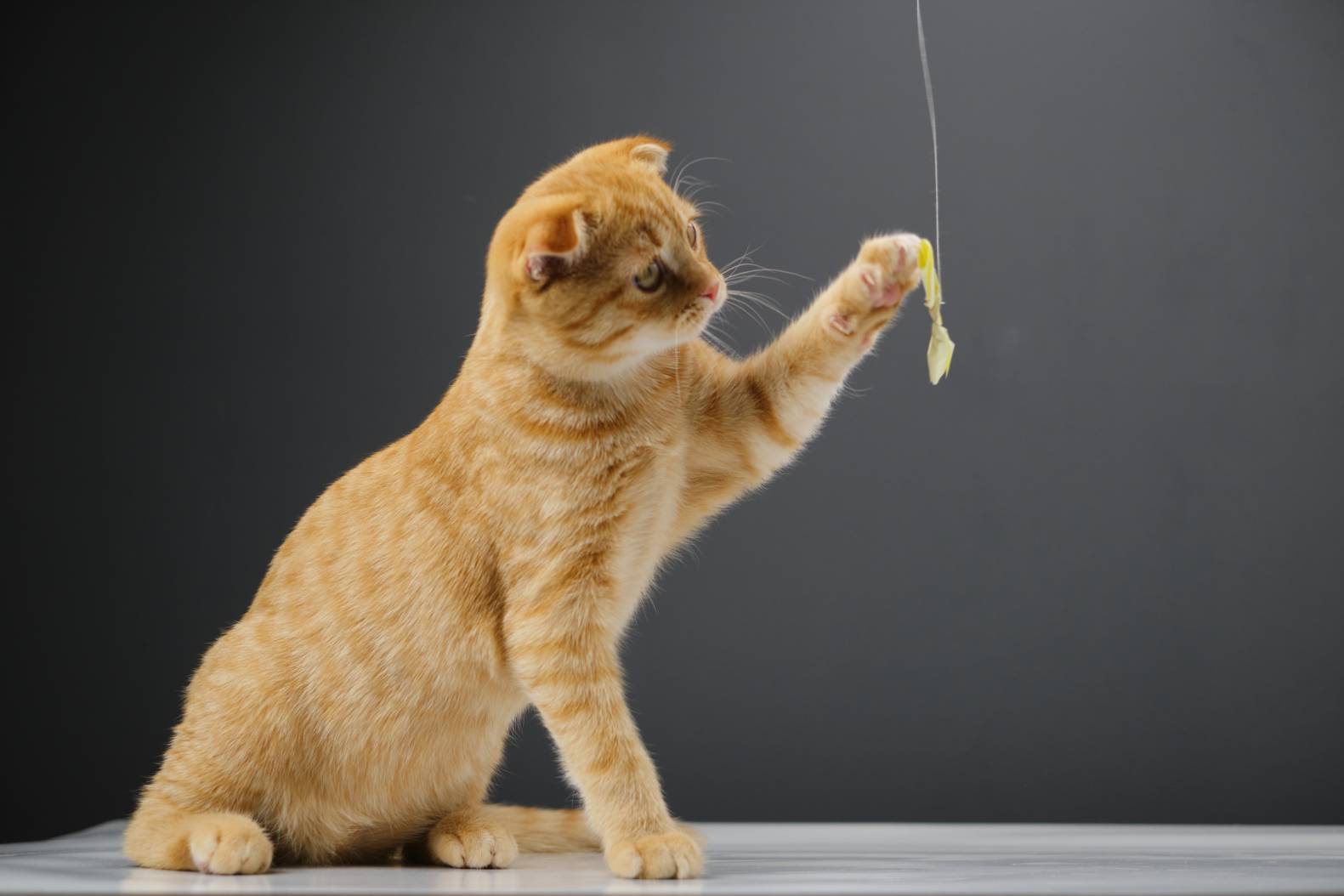
Cat Sleep: The Basics
Studies have identified four stages of sleep in cats: the awake state (when they are drowsy and preparing to sleep), two stages of slow-wave sleep (light and deep slow-wave sleep), and the REM phase.
Like humans, cats cycle through various phases and may not always reach the REM phase in which they dream. The majority of their actual sleep time is made up of slow-wave sleep, and this accounts for 75% of sleep. In this phase, cats can spend up to 10 minutes at a time and may drift into the REM phase next. Light slow-wave sleep, catnapping, or dozing occurs many times throughout the day. A dozing cat is still alert enough to be aware of their surroundings. They may keep their eyes open slightly or swivel their ears towards noises. Dozing cats also keep their body in position to wake and move quickly if needed.
Deep slow-wave sleep occurs next. During deep sleep, cats are not as aware of what’s going on around them and will not wake up easily. If you notice your cat twitching their face, paws, tail, or other muscles, they’re now in the REM phase of sleep, characterized by rapid eye movement and brain activity similar to the awake state; your cat’s probably dreaming. This cycle of slow-wave and REM sleep continues until the cat is rested and ready for their next adventure.
 Should You Worry About How Much Your Cat Sleeps?
Should You Worry About How Much Your Cat Sleeps?
As we have seen, it is perfectly normal for cats to sleep the majority of their life away. However, there are certain instances when you might need to give your sleeping cat a second look.
A cat’s sleeping is meant to help them rest to restore energy. If your cat suddenly both sleeps excessively and also seems lethargic or out of sorts when they are awake, you could have a sick cat on your hands.
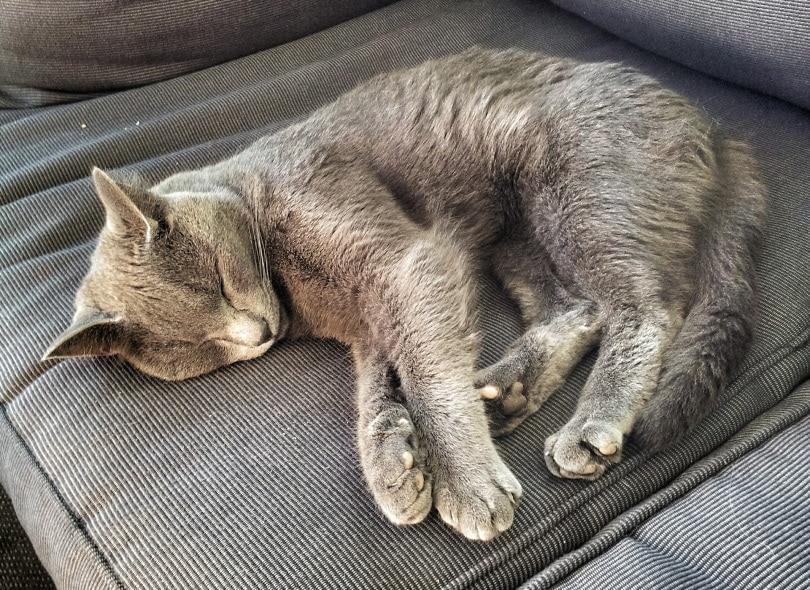
Older cats usually sleep more than younger ones, but if your older cat also seems lethargic, weak, or uncoordinated, or if they are eating less or not at all, limping or moving with difficulty, or drinking excessively, then there is likely an underlying health issue. Cats that are in pain also tend to sleep more than usual. Older cats can develop arthritis, kidney disease, heart disease, hyperthyroidism (overactive thyroid), cancer, and many other conditions that will make them feel unwell and tired.
If you are concerned that your cat may be sick or in pain, don’t hesitate to make an appointment with your veterinarian as soon as possible. Cats are excellent at hiding their health problems, and you want to try and catch any issues before they get more serious.
Indoor cats of any age sometimes tend to sleep a lot because they’re bored. Try to make sure your cat has plenty of toys, scratching posts, perches, and other environmental enrichment objects, especially if they are left alone a lot during the day. Getting them used to walking on a harness and a lead in a secure environment or setting up a safe, enclosed catio could also be options for some cats and their owners. Also, try to make sure you are spending one-on-one time with your cat every day and playing with or petting them.
With cats sleeping an average of 15 hours a day, you'll want to supply your companion with a bed that offers maximum comfort. Our Hepper Nest Bed was designed to support the various needs of cats of all ages, sizes and ailments, making it an excellent choice for any feline. It's high sides and wide top edge embrace kitties in whichever position they prefer to sleep in. A removable, machine washable liner ensures you can keep their bed fresh without compromising the structure of the durable foam shell meaning this modern bed will last your cat many years and cozy naps. Learn more about the Nest here.
- HAPPY COZY CATS - Your kitty will bask in luxurious sherpa-lined comfort while feeling warm, safe,...
- MODERN DESIGN - Contemporary styling with upholstered fabric construction; just like your human...
Final Thoughts
While it may seem that cats are lazy, the truth is all their sleeping serves a specific purpose. And as anyone with a cat can tell you, cats certainly make up for their snoozing with plenty of energy when they are awake. As long as your cat is otherwise behaving normally, you can let sleeping cats lie without worry, knowing that they will wake up refreshed and ready to grace your life with their presence!
See Also:
- Why Do Cats Like to Sleep in Sinks? 8 Likely Reasons
- Why Do Cats Knock Things Over? 3 Likely Reasons
Featured Image Credit: Roy Buri, Pixabay


 Should You Worry About How Much Your Cat Sleeps?
Should You Worry About How Much Your Cat Sleeps?
